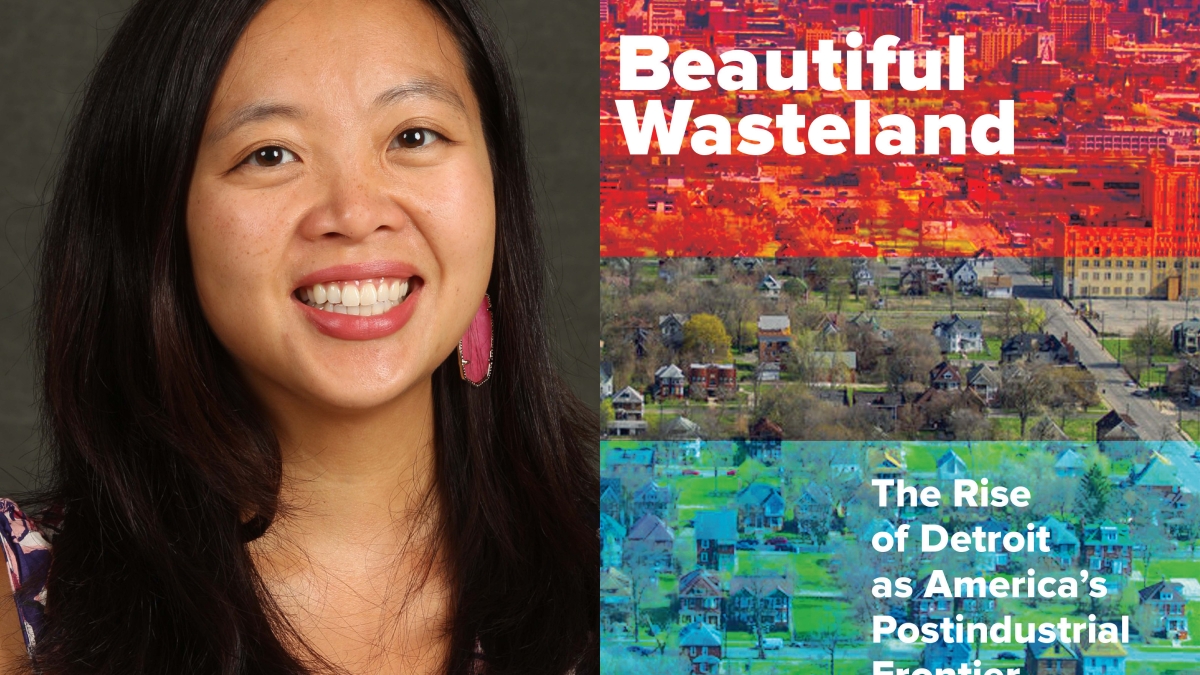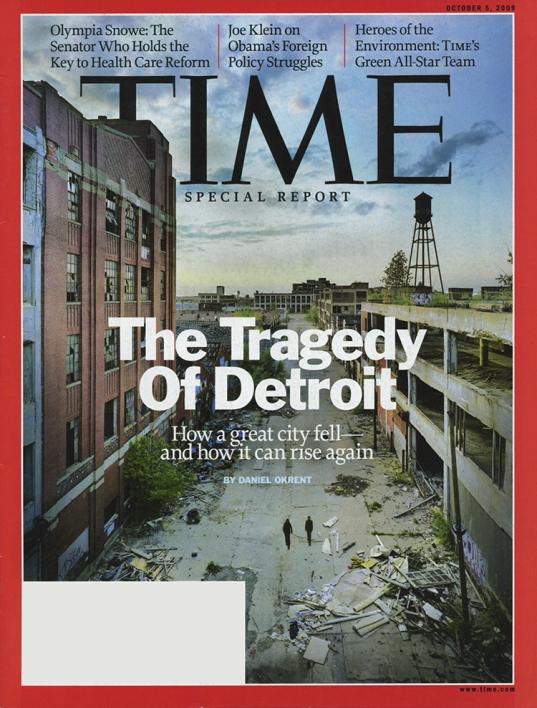Author to discuss nuances of Detroit’s rise at ASU event

Rebecca J. Kinney, the author of "Beautiful Wasteland: The Rise of Detroit as America's Postindustrial Frontier," will visit ASU on Oct. 25 at the IHR Book Award and Humanities Author Reception.
Rebecca J. Kinney, originally from Detroit, noticed a change in the way people talk about her hometown.
“While living in California, whenever I told people I was from Detroit, they’d respond in a negative way. They’d say something like, ‘Oh, you must be so glad to be out of there.’ But by 2012, the response shifted. They’d say, ‘I hear such cool things are happening in Detroit.’”
Through her book, "Beautiful Wasteland: The Rise of Detroit as America’s Postindustrial Frontier," Kinney researched this transformation of Detroit’s perception in the public eye. She is the winner of Arizona State University's Institute for Humanities Research 2018 Transdisciplinary Book Award, for a nonfiction work that exemplifies the finest transdisciplinary, socially-engaged humanities-based scholarship.
“I’d ask them what they knew about Detroit and how they learned that. It was always from the media, popular culture, Time magazine, Huffington Post, etc. This is what I was looking at during the beginning stages of the book project. I wanted to know what the narrative of Detroit was and how the narrative of Detroit shifted in regards to its residents — from a perception of a poor, primarily black city to a white, hipster mecca.”
Kinney will visit ASU to give a talk about her book at the IHR Book Award and Humanities Faculty Reception at 4:30 p.m. Oct. 25, at the University Club on the Tempe campus.
Kinney is an associate professor in the School of Cultural and Critical Studies and American Culture Studies at Bowling Green State University. She teaches classes on qualitative research methods, race and popular culture, Asian American studies and interdisciplinary research methodologies.
“Every time I teach an intro to ethnic studies class, a student always asks, ‘How does racism still exist if we have laws meant to end racism?’ 'Beautiful Wasteland' emerged from these kinds of classroom conversations. How racism persists, even as narratives of how we think about racism are always shifting. By tracing the shifts in popular culture and cultural productions we can see evidence of shifting cultural views, yet these shifts oftentimes reflect a persist investment in the logics of racism.”
Kinney analyzed cultural artifacts like print media, internet web boards, documentary films, commercials, magazine articles and more while writing "Beautiful Wasteland."
"Beautiful Wasteland" is an investigation of how racism persists and operates in the changing landscape of postindustrial cities like Detroit. Kinney’s research works through the ever-changing narratives of Detroit’s rise, decline, and potential to rise again in order to reveal the continuing investment in white supremacist logics. By analyzing cultural artifacts like print media, internet web boards, documentary films, commercials, magazine articles and more, Kinney argues that the narrative of Detroit’s ascent, just like the narrative of its decline, is steeped in ideological investments in whiteness.
“I chose to focus on these cultural materials because they were so banal, so nonspectacular. Whether you’re a scholar, an activist or just a person going along with their everyday life, you had heard of, seen, or accessed these cultural artifacts in some way.”
When she first envisioned the book, she had imagined a more ethnographic process — working on the ground, representing stories and narratives of people who had long been in Detroit. However, for the very practical reason that she was not living in there at the time, the book had to take a new path.
“If it had been ethnographic, it would have been more about how longtime Detroiters were thinking about their city. Because I wasn’t in the area, it became a book about how Detroit is imagined in a national context.”
More Arts, humanities and education

Honoring innovative practices, impact in the field of American Indian studies
American Indian Studies at Arizona State University will host a panel event to celebrate the release of “From the Skin,” a…

ASU alum's humanities background led to fulfilling job with the governor's office
As a student, Arizona State University alumna Sambo Dul was a triple major in Spanish, political science and economics. After…

ASU English professor directs new Native play 'Antíkoni'
Over the last three years, Madeline Sayet toured the United States to tell her story in the autobiographical solo-…
